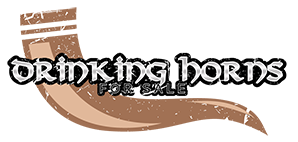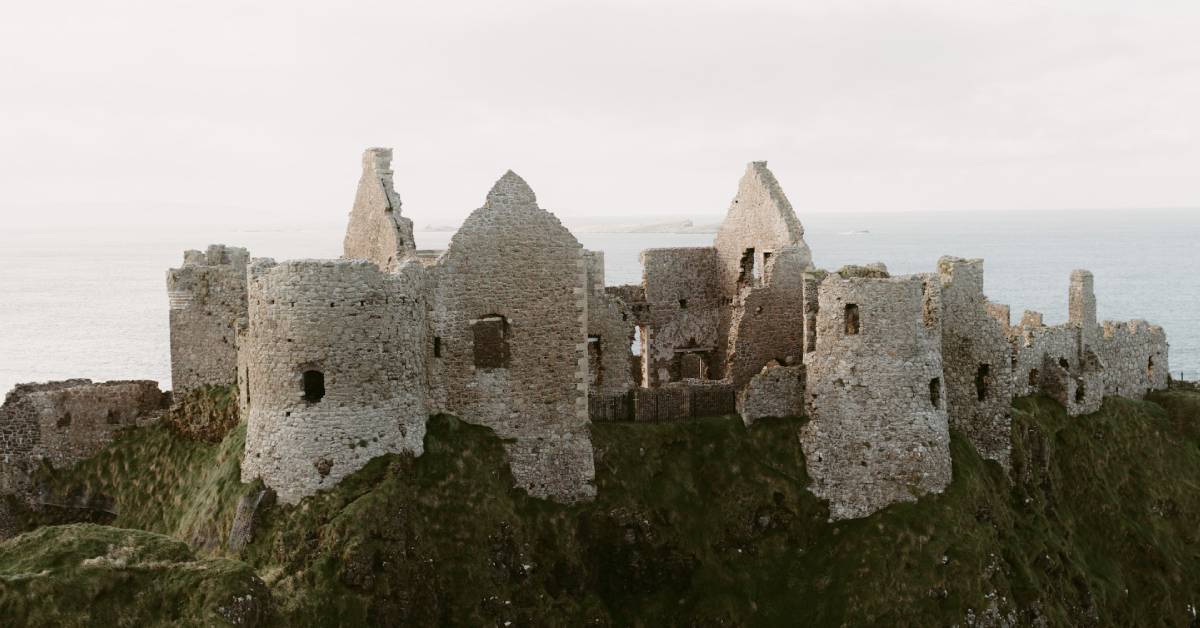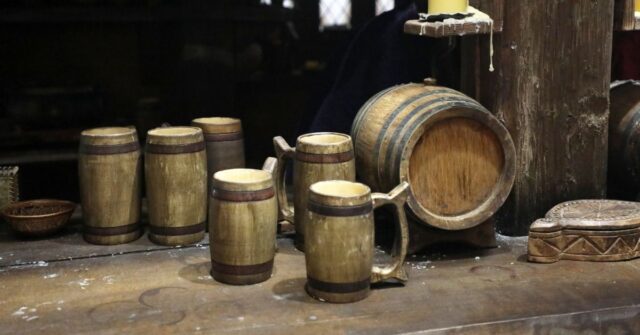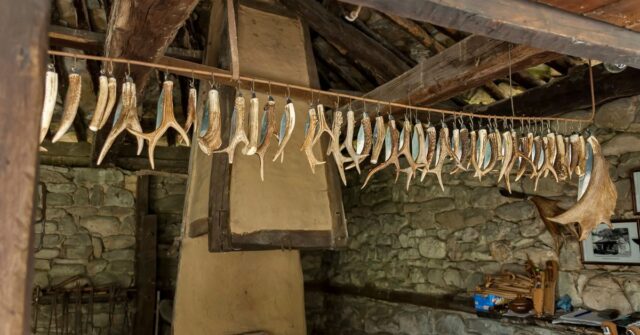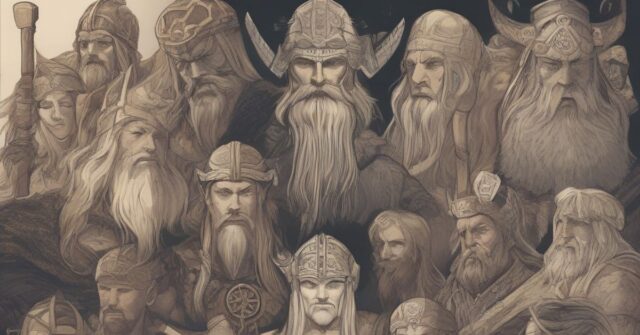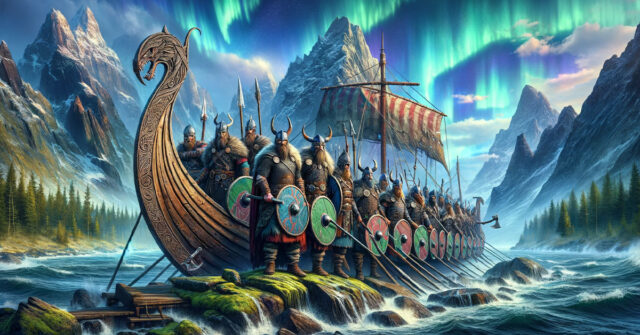The tradition of using drinking horns is one steeped in history, with roots in numerous cultures across the globe.
Their role as more than just practical utensils, but as potent symbols of power, status, and cultural identity, is particularly notable in the medieval period.
This article seeks to delve into the fascinating world of drinking horns during these times, exploring their cultural significance, artistic representation, and enduring legacy.
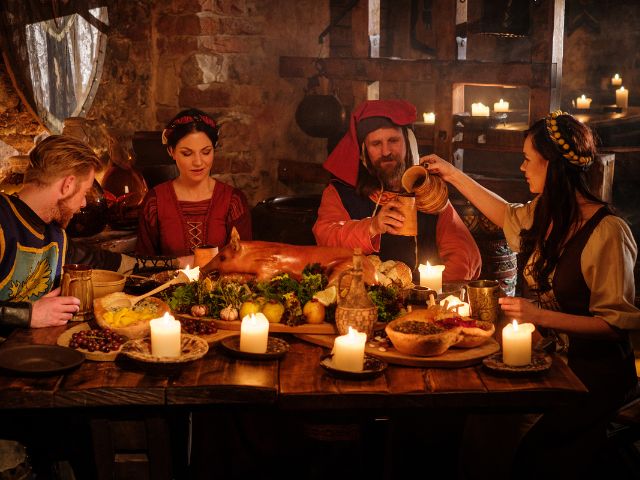
Introduction to Drinking Horns
Drinking horns, as the name suggests, are drinking vessels made from the horns of various animals. Their use can be traced back millennia across different continents, cultures, and civilizations.
But to understand their place in the medieval world, it is essential to first understand their origin and early cultural significance.
The Origin of Drinking Horns
The earliest known use of drinking horns dates back to the Iron Age, although some evidence suggests they could have been in use even earlier.
They have been found in various ancient cultures, including the Scythians, Thracians, and Germanic tribes.
The materials used and the decorative motifs found on these early drinking horns can provide fascinating insights into the beliefs and practices of these cultures.
Cultural Significance of Drinking Horns
From their earliest use, drinking horns were more than just functional items. They often had ceremonial or religious purposes, associated with rites of passage, religious rituals, and feasting.
For example, in Norse culture, drinking horns were used in symbel, a ceremonial toasting ritual. In many cultures, the size and decoration of a person’s drinking horn could indicate their status or wealth.
Drinking Horns in the Medieval Period
In the Middle Ages, the use of drinking horns continued and evolved, becoming integral parts of medieval life and culture.
These drinking vessels were not only reserved for the elite but were also used by people of various classes in society.
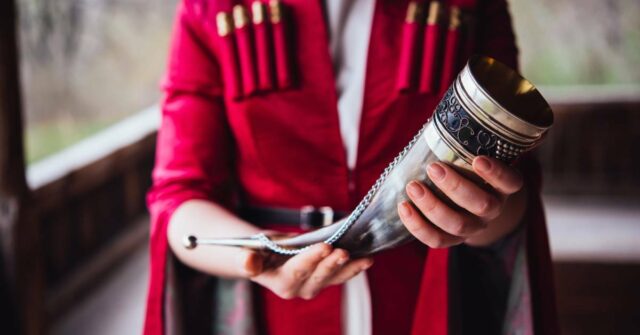
The Evolution of Drinking Horns in the Middle Ages
During the medieval period, the form and function of drinking horns changed significantly. Some were designed to be practical, with flat bases or stands that allowed them to be set down without spilling.
Others were primarily ceremonial, their size, and intricate decorations rendering them impractical for regular use. As Christianity spread, some drinking horns began to incorporate Christian symbols and motifs.
Types of Drinking Horns in Medieval Times
Medieval drinking horns varied greatly in size, shape, and decoration. Some were small and simply decorated, suitable for everyday use.
Others, known as ‘great horns,’ were large, elaborately decorated pieces used for ceremonial purposes. There were also ‘guild horns’ used by various guilds during their meetings and feasts.
The Social Symbolism of Drinking Horns
In the social landscape of the Middle Ages, drinking horns played a significant role. They were not only vessels for consuming beverages but also served as a mark of social status and wealth.
Drinking Horns as a Status Symbol
The size, intricacy of decoration, and materials used to make a drinking horn were often indicative of the owner’s social status. Larger, more elaborate horns were typically owned by those of higher status.
The practice of gifting drinking horns, often richly adorned, also became a common practice among the elite.
The Role of Drinking Horns in Feasts and Gatherings
Feasts and gatherings were an integral part of medieval society, and drinking horns were often at the center of these events.
They were used in toasts and oaths, and in some cases, the order in which the horn was passed could indicate the social ranking of the participants.
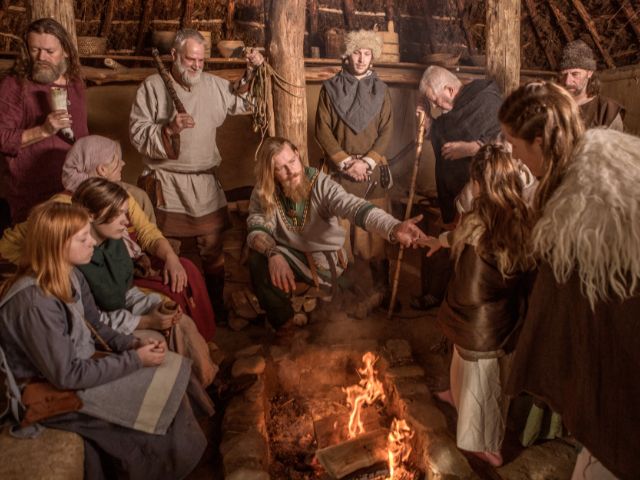
Drinking Horns in Chivalric Codes and Traditions
In the world of chivalry, the drinking horn found its place in various traditions. It was often used in the ritual of dubbing a knight, and it also played a role in other ceremonies and tournaments.
The use of a drinking horn was considered a sign of nobility and courage.
Artistic Representation of Drinking Horns
The artistry involved in the creation of medieval drinking horns is remarkable. They were often intricately carved and adorned, making them not just practical items but beautiful works of art.
Decorative Motifs and Their Meanings
Various motifs were used in the decoration of drinking horns. These could include religious symbols, natural motifs, mythological creatures, and scenes from legends or history.
These decorations often held significant symbolic meaning and could tell stories or convey messages about the owner’s beliefs, lineage, or status.
Materials and Techniques in Horn Decoration
Drinking horns were typically made from the horns of cattle, buffalo, or goats. They were often embellished with precious metals like gold or silver and sometimes adorned with gemstones.
Techniques such as carving, engraving, and inlay were used to create intricate designs on the surface of the horns.
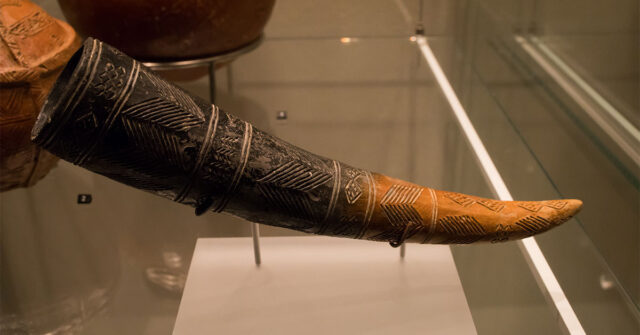
Iconography of Drinking Horns in Medieval Art
Drinking horns also appeared frequently in medieval art, including paintings, sculptures, and manuscripts. They were often used as symbols of status, power, or hospitality.
They also appeared in depictions of feasts, battles, and religious scenes, reflecting their integral role in medieval life.
Drinking Horns in Medieval Literature and Lore
Not only were drinking horns physical artifacts, but they also played significant roles in the literature and lore of the period.
Drinking Horns in Epic Poetry and Sagas
Drinking horns feature prominently in many medieval epic poems and sagas. They appear in stories of heroism and adventure, where they might be used in toasts of victory or oaths of loyalty.
They also appear in more fantastical contexts, such as in tales of magical horns with special properties or abilities.
Myths and Legends Associated with Drinking Horns
Several myths and legends surrounding drinking horns have been passed down through the centuries. These tales often imbued drinking horns with magical properties or associated them with legendary figures or events.
One of the most famous examples is the Horn of Brân Galed from Welsh mythology, said to have the power to fill itself with whatever drink the holder desired.
Preserved Medieval Drinking Horns
Many medieval drinking horns have survived to the present day, preserved in museums or private collections.
These artifacts provide a valuable glimpse into the past, offering insights into the society, beliefs, and artistic practices of the time.
Noteworthy Medieval Drinking Horns in Museums
Some of the most famous preserved drinking horns include the Sutton Hoo burial ship horn, the Bayeux Tapestry horn, and the Vapheio cups.
Each of these horns is notable for its craftsmanship, decoration, and historical significance.
Archaeological Finds of Drinking Horns
Archaeological excavations have also unearthed numerous drinking horns, often in burial sites or hoards.
These finds have helped to shed light on the use of drinking horns in different regions and periods of the Middle Ages, revealing variations in design, decoration, and usage.
The Legacy of Medieval Drinking Horns
Though their widespread use has declined over the centuries, the impact of medieval drinking horns is still felt today. Their legacy can be seen in contemporary culture, and they continue to be symbols of power and status.
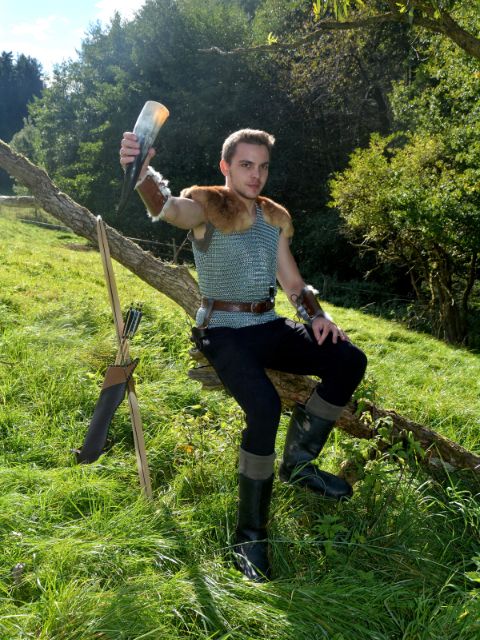
The Modern Revival of Drinking Horns
In recent years, there has been a resurgence of interest in drinking horns. They are used in historical reenactments, pagan rituals, and by enthusiasts of medieval culture.
This revival has led to a new generation of craftsmen creating drinking horns, often using traditional methods and designs.
Drinking Horns in Contemporary Pop Culture
Drinking horns have also found their way into modern popular culture. They appear in films, television shows, and books, often in fantasy or historical settings.
This has helped to keep the image of the drinking horn alive in the public consciousness, even if its traditional uses have largely fallen by the wayside.
The Symbolism of Drinking Horns Today
Today, drinking horns continue to carry connotations of power and status, although their meanings can vary depending on the context.
In some circles, they might symbolize a connection to the past, an interest in history or traditional cultures, or a desire to eschew modern conveniences in favor of more archaic practices.
Conclusion
In conclusion, the history of drinking horns in the Middle Ages is a rich and multifaceted one. These objects were more than mere drinking vessels; they were symbols of power, works of art, and important social tools.
Though their usage has changed over the centuries, their symbolic power endures, and they continue to hold a fascination for us even today.
